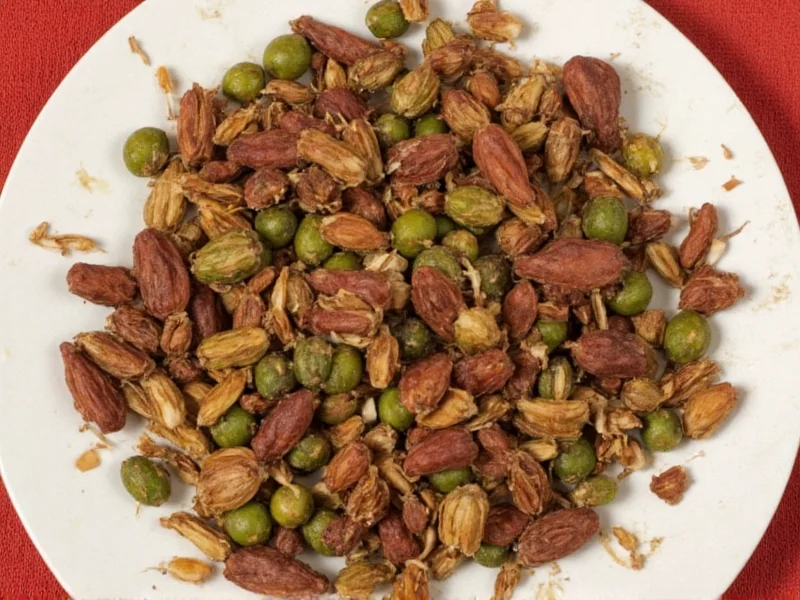Dried savory, a versatile herb with peppery notes, comes in two primary varieties: summer savory (Satureja hortensis) and winter savory (Satureja montana). While summer savory offers a milder flavor preferred for bean dishes and stuffing, winter savory provides a more robust, pine-like taste suitable for stews and roasts. Understanding these differences helps when sourcing the right variety for your culinary needs.
Top Retail Sources for Dried Savory
When searching where to buy dried summer savory or its winter counterpart, consider these reliable channels that balance quality, accessibility, and value.
| Source Type | Best For | Quality Indicators | Average Price (per ounce) |
|---|---|---|---|
| Specialty Spice Retailers | Freshness, variety, organic options | Harvest dates, origin transparency, small-batch processing | $2.50-$4.00 |
| Major Grocery Chains | Convenience, immediate availability | Check for recent packaging dates, avoid dusty containers | $1.75-$2.50 |
| Online Herb Specialists | Rare varieties, bulk purchases | Organic certification, sustainable harvesting practices | $2.00-$3.50 |
| Local Farmers Markets | Regionally grown, seasonal availability | Direct grower knowledge, visible product quality | $2.25-$3.00 |
Specialty Retailers Offering Premium Dried Savory
For those seeking organic dried savory retailers with exceptional quality control, several specialized companies stand out. The Spice House sources summer savory from Greek mountain regions, packaging it within weeks of harvest to preserve volatile oils. Penzeys Spices offers both summer and winter varieties with detailed origin stories, while Mountain Rose Herbs provides USDA-certified organic options harvested using sustainable wildcrafting methods.
When exploring where can I find dried savory in grocery stores, check the spice aisle of Whole Foods, Wegmans, and Sprouts for their premium house brands. Kroger's Simple Truth Organic line and Trader Joe's often carry dried savory seasonally, typically near other Mediterranean herbs. International markets specializing in European or Middle Eastern ingredients frequently stock winter savory, which is more common in those culinary traditions.
Online Marketplaces and Direct Producers
Amazon hosts numerous sellers of dried savory, but quality varies significantly. Look for vendors with at least 4.5-star ratings and recent positive reviews mentioning freshness. Etsy connects buyers with small-scale herb producers who often hand-harvest and sun-dry their savory. For the most reliable best places to purchase dried savory online, prioritize websites with transparent sourcing information and harvest dates.
Direct-from-farm options through platforms like Local Harvest provide access to hyper-local dried savory. Many small herb farms now offer dried products alongside fresh herbs during off-seasons. These producers typically use low-temperature dehydration methods that preserve more flavor compounds than commercial high-heat processing.
Quality Considerations When Purchasing Dried Savory
Not all dried savory delivers equal flavor impact. The best products maintain deep green color without excessive browning, indicating proper drying temperature. Crush a small amount between your fingers—a strong, clean aroma should emerge immediately. Avoid products with visible stems or excessive leaf fragmentation, which suggests rough handling.
When researching dried savory spice availability, note that winter savory generally has better shelf stability due to its higher camphor content. Properly stored in airtight containers away from light, quality dried savory maintains peak flavor for 1-2 years. Summer savory, being more delicate, benefits from refrigeration after opening and should be used within 12 months.
Practical Alternatives When Dried Savory Is Unavailable
If you're struggling to find dried winter savory for sale locally, several substitutions work well depending on your recipe. Thyme combined with a pinch of marjoram creates a close approximation for most savory applications. For bean dishes specifically, a mixture of rosemary and sage provides similar earthy notes. When substituting, use about 75% of the called-for savory amount since these alternatives have stronger flavors.
Growing your own savory then drying it offers the freshest possible product. The plants thrive in well-drained soil with full sun and require minimal care. Harvest just before flowering for peak essential oil concentration, then hang small bundles upside down in a dark, dry space. Home-dried savory often surpasses commercial products in flavor intensity and lacks the anti-caking agents sometimes found in store-bought versions.
Is dried savory the same as dried thyme?
No, dried savory and thyme are distinct herbs with different flavor profiles. Savory has a peppery, slightly minty taste with subtle pine notes, while thyme offers more earthy, lemony characteristics. They're not interchangeable in equal amounts, though thyme can substitute for savory in a pinch when adjusted for stronger flavor.
How can I verify the freshness of dried savory before purchasing?
Check for vibrant green color without excessive browning, which indicates proper drying. Crush a small amount between your fingers—a strong, clean aroma should emerge immediately. Avoid products with visible stems or excessive leaf fragmentation. When buying online, look for listings that specify harvest or packaging dates within the last 6-12 months.
What's the difference between summer and winter dried savory?
Summer savory (Satureja hortensis) has a milder, more delicate flavor preferred for bean dishes and stuffing, while winter savory (Satureja montana) offers a stronger, more robust pine-like taste suitable for stews and roasts. Winter savory generally has better shelf stability due to higher camphor content and maintains flavor longer in storage.
Can I substitute fresh savory for dried in recipes?
Yes, but use three times the amount of fresh savory when substituting for dried. For example, if a recipe calls for 1 teaspoon dried savory, use 1 tablespoon fresh. Fresh savory works best added toward the end of cooking to preserve its delicate flavor, while dried savory benefits from longer cooking times to release its oils.
Why is my dried savory losing flavor quickly after opening?
Dried savory loses potency when exposed to air, light, and moisture. Store it in an airtight container away from heat sources and direct sunlight. For longest shelf life, keep summer savory in the refrigerator after opening. Properly stored, quality dried savory maintains peak flavor for 1-2 years, though summer savory benefits from use within 12 months.











 浙公网安备
33010002000092号
浙公网安备
33010002000092号 浙B2-20120091-4
浙B2-20120091-4